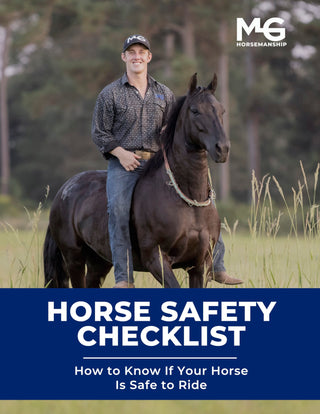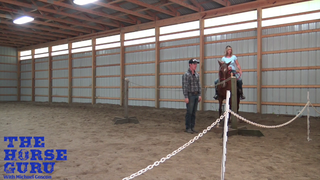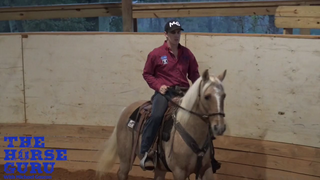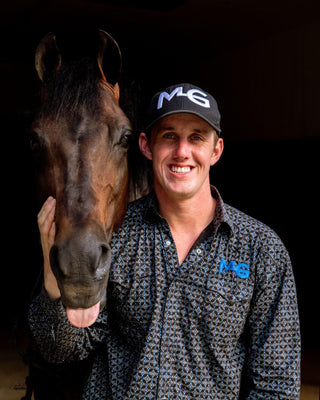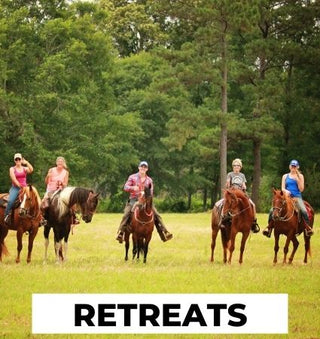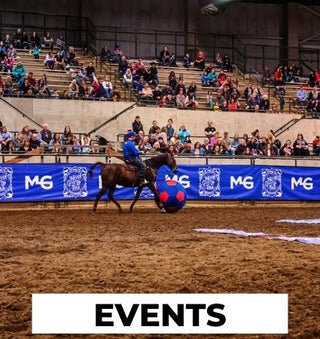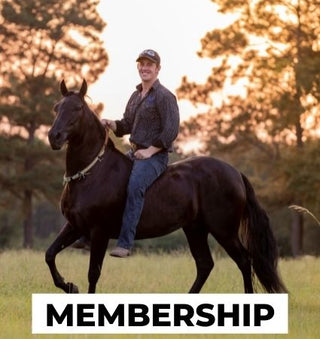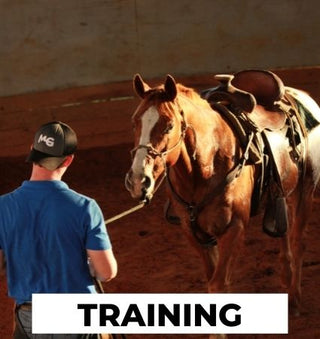Watch the Video Here or continue reading below!
Push obstacles—like tarps, soccer balls, and pool noodles—can transform your horse’s confidence and obedience when approached correctly. By the 11th grade in horse training, your horse should already have a solid foundation. This level focuses on building mental resilience, control, and trust using push obstacles. Let’s dive into the do’s and don’ts of handling this critical training stage effectively.
✅ DO: Keep Your Horse’s Feet Moving
Subtitle: Motion Builds Confidence
One of the golden rules with push obstacles is never let your horse get stuck. Whether your horse wants to jump the tarp or spin away from the soccer ball, the key is movement. As long as your horse keeps its feet moving, it's less likely to panic. Use circling and consistent forward motion to bring your horse back to the object until it naturally begins to face it without resistance.
❌ DON’T: Add Pressure When They’re Stuck
Subtitle: Pressure Without Direction Creates Chaos
Many riders make the mistake of kicking, whipping, or yanking when their horse refuses an obstacle. This only creates tension and confusion. Instead, redirect. Guide your horse in a way that always leads back to the obstacle. Pressure is only productive when it’s paired with a clear path forward.
✅ DO: Always Face the Obstacle
Subtitle: Facing Fear Builds Trust
No matter how far your horse runs from the obstacle, always bring them back to face it. If your horse runs left, you pull right. If it runs forward, you redirect back. Horses naturally want to turn away from scary things, but our goal is to domesticate that instinct and build a dependable partner.
❌ DON’T: Let Them Turn Tail and Walk Away
Subtitle: Turning Away Reinforces Fear
Turning your horse away from something it's afraid of tells them it’s okay to avoid discomfort. Instead, stay the course. Even if you must circle the object repeatedly, always end facing it. This consistency communicates leadership and instills courage.
✅ DO: Use Proper Obstacle Design
Subtitle: Bigger Is Often Better
Start with large, easy-to-see obstacles. A 20-foot tarp cut into strips is a great, cost-effective start. Larger obstacles offer more surface area and are often less intimidating than smaller ones. Horses are more likely to approach a lake than a puddle—it’s not just common sense, it’s horse sense.
❌ DON’T: Hold the Horse Back Before Asking It Forward
Subtitle: Don’t Confuse Curiosity with Disobedience
If your horse approaches a new obstacle, don’t jerk the reins the moment it slows to investigate. That sends a mixed message—like saying “don’t go near it” then “why didn’t you go in?” Let the horse explore, then redirect if necessary.
✅ DO: Redirect and Release
Subtitle: Reward the Try, Not the Escape
Every time your horse makes an effort to face or approach the obstacle, offer a release. Make the right thing easy and the wrong thing inconvenient. Redirection followed by immediate release builds clarity. Don’t wait until you’re across the arena to reward. Timing matters.
✅ DO: Train for Tactile Desensitization
Subtitle: Don’t Let “Leg-Phobia” Linger
If your horse is spooky about things brushing its legs or belly—like ropes or grass—start with groundwork exercises using tools like tarps or pool noodles. Approach gradually, always facing up and redirecting. Never sneak up or ask for permission—lead confidently.
❌ DON’T: Chase Panic
Subtitle: Let the Horse Make the Wrong Decision, Then Redirect
If a horse surges or jumps, allow them to commit. Then redirect. Pulling before they decide can lead to resistance. Just like humans, horses have "selective hearing." Clear forward messaging followed by redirection works better than mixed signals.
✅ DO: Spiral Down from Excitement
Subtitle: Calm Comes from Control, Not Avoidance
After a breakthrough—especially if the horse is still amped—don’t just walk away. Use spirals or lateral work to bring their energy back down. Calm is created through consistent leadership, not by avoiding the scary thing.
✅ DO: Know When You’re Ready for Obstacles
Subtitle: Confidence Comes from a Solid Foundation
Push obstacles come late in the training series for a reason. If your horse isn’t soft in the face and responsive in the hindquarters, you’re not ready. Skipping ahead is a gamble. Control must come first—without it, you’re riding on borrowed time.
❌ DON’T: Yield Your Space
Subtitle: Control the Territory, Control the Horse
Horses test boundaries. If your horse pushes into your bubble and you step back, you’re yielding leadership. You are the predator; they are the prey animal. Set firm, clear boundaries. Stand your ground and expect obedience—not friendship.
Final Thoughts: Push Obstacles Are a Confidence Builder, Not a Test of Strength
By consistently applying these do’s and don’ts, your horse will learn that obstacles are not threats—they're opportunities. Push obstacles in 11th grade help solidify your horse’s respect, obedience, and trust. Remember: clear communication, consistent redirection, and confidence in your leadership are the keys to success.

